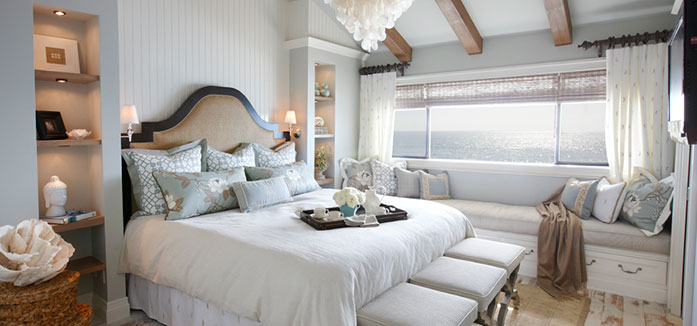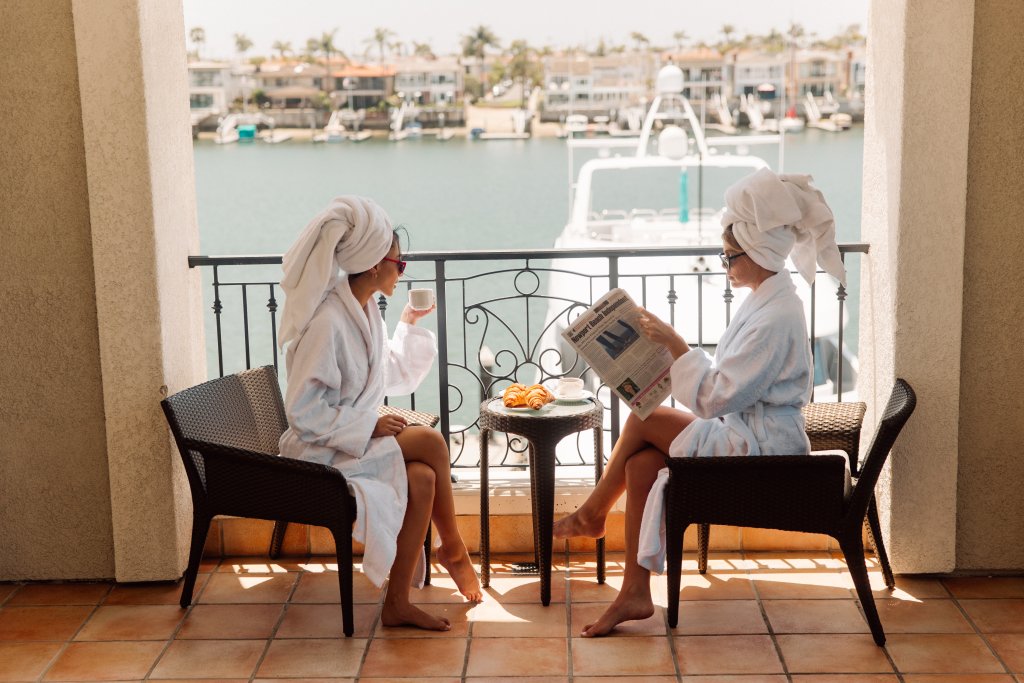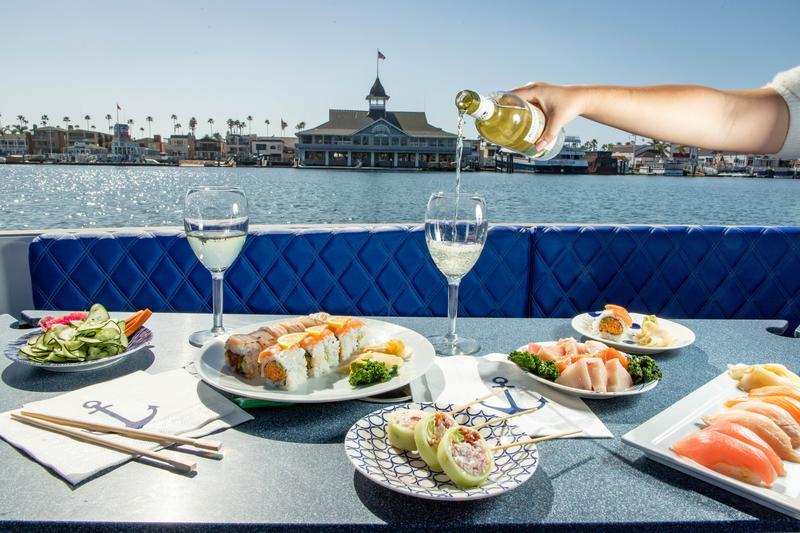Coastal Living

When designing a seaside abode, it’s easy to go overboard. “Don’t be too literal with coastal-inspired decorating,” says interior designer Lisa McDennon, whose Newport Beach projects have earned her numerous accolades, including ASID’s Home of the Year award. “Incorporate a few accents like seashells or anchors, but avoid creating the design from that motif.” Whether seeking inspiration for a sweet beach cottage, or a cliff-hugging hacienda with sweeping ocean views, McDennon tells us how to achieve balance when bringing the outdoors into your Newport Beach home.
When did your affinity for interior design develop, and what inspired it?
I first studied painting and drawing at University of California, Irvine. I took an architectural design class and fell in love with design. So I went on to work for an architect — while still in school — and through the design firm began designing and specifying interiors. I was hooked, and returned to school for a second bachelor’s degree in Interior Design.
What was your first design project?
After my first year of design school I transferred from the architectural firm to my first interior design firm. I worked for a few local designers, and then my way up the “design ladder” before stepping out on my own. My first solo project was a resort in Fiji.
Of what Newport Beach project are you most proud?
One of my favorite houses I designed here was a contemporary remodel — very sleek but softened by neutral textures and warm woods. The client gave me free reign and trusted my instincts. I ended up winning several design awards for it, including ASID’s Home of the Year award.
Another favorite was an eclectic and colorful interior in which we provided minimal architectural changes, but the ones we made really counted: adding accents of wallpaper in the kitchen, glamorous hardware, wainscoting, and personalized touches. We had the opportunity to incorporate the client’s existing furnishings and used them to inspire each space. I find it challenging and fun to use something existing and spin it into something new again rather than just getting rid of it.
Describe your dream project.
I would love to design for a client who wants to travel and shop for unique finds, furnishings, and textiles from around the globe.
In addition to avoiding a kitschy aesthetic, what other rules apply to coastal decorating?
Window coverings are very important because you need to control light and glare, and protect your interiors while maintaining unobstructed views. You must strike the right balance.
What are some fun color palettes to play with?
I like colors from nature — earth, sea, and sky.
How do you bring the outdoors in?
It is important to have a cohesive flow between the inside and the outside. With innovations in flooring, doors, and windows, you can achieve a lot. You should design your outdoor space as if it were another room in your house, with the same overall design concept in mind.
What are essential items for every coastal-inspired home?
Incorporate different layers of texture in your materials — linens, cottons, and natural woods. You can have fun with the juxtaposition of high gloss and matte finishes. Indoor-outdoor fabrics are essential for furniture set sun-drenched areas. Sisal and flat-weave rugs are made for outdoor use. Add pops of color, such as ocean blue.
What is an unexpected element you might throw into the mix?
Things you already own — not everything has to be beach-y. Coastal inspiration comes from a combination of lifestyle and the elements around you. For example, a coastal home in Florida has a completely different aesthetic than a coastal home in Southern California. We are inspired not only by the coast but the canyons and other geographical features, as well as lifestyle that distinguish the two coasts.








